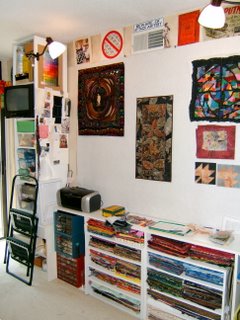Half a Brain, Whole Self
 Alphachimp
Alphachimp  Wednesday, November 30, 2005 at 7:57AM
Wednesday, November 30, 2005 at 7:57AM
So, what happens when you put a mirror in a room filled with chimpanzees?
At first, they do what I do in the morning when confronted with a reflection of my true self: They attacked it. Then they put their butts on it. Then they realize, "Hey! That crazy chimp is merely doing exactly what I'm doing!"
But what happens when a chimp who has never seen a mirror before, spots a dab of red paint on its own forehead on the forehead of the chimp in the mirror? Just like me and you, without a moment's hesitation, the chimp wipes it off!
This leads to playing in front of the mirror, primping and soulful gazing into the reflection of their own eyes.
In a great show on the Brain and the Self, the host of Radio Lab stares into the mirror with Dr. Julian Keenan, reflects on the illusion of self-hood with British neurologist Paul Broks, and contemplates the evolution of consciousness with Dr. V. S. Ramachandran. Also, the story of woman who one day woke up as a completely different person--an old man in Vietnam.
from New York Public Radio
Radio Lab
Who Am I? Friday, February 04, 2005
Looking into a mirror as a young child, Steven Johnson wondered, "How is that me?" We try to find that part of the brain that recognizes ones self with Montclair State University Professor Julian Keenan. Turns out: only half of your brain really knows who you are. Also, Independent radio producer Hannah Palin tells about her mother, who, after suffering an aneurism, woke up with a completely different personality. She looks the same, and has the same memories, but where did her old mother go? One possible answer: Vietnam. Later, Paul Broks continues the discussion on the fragility of the self.



















